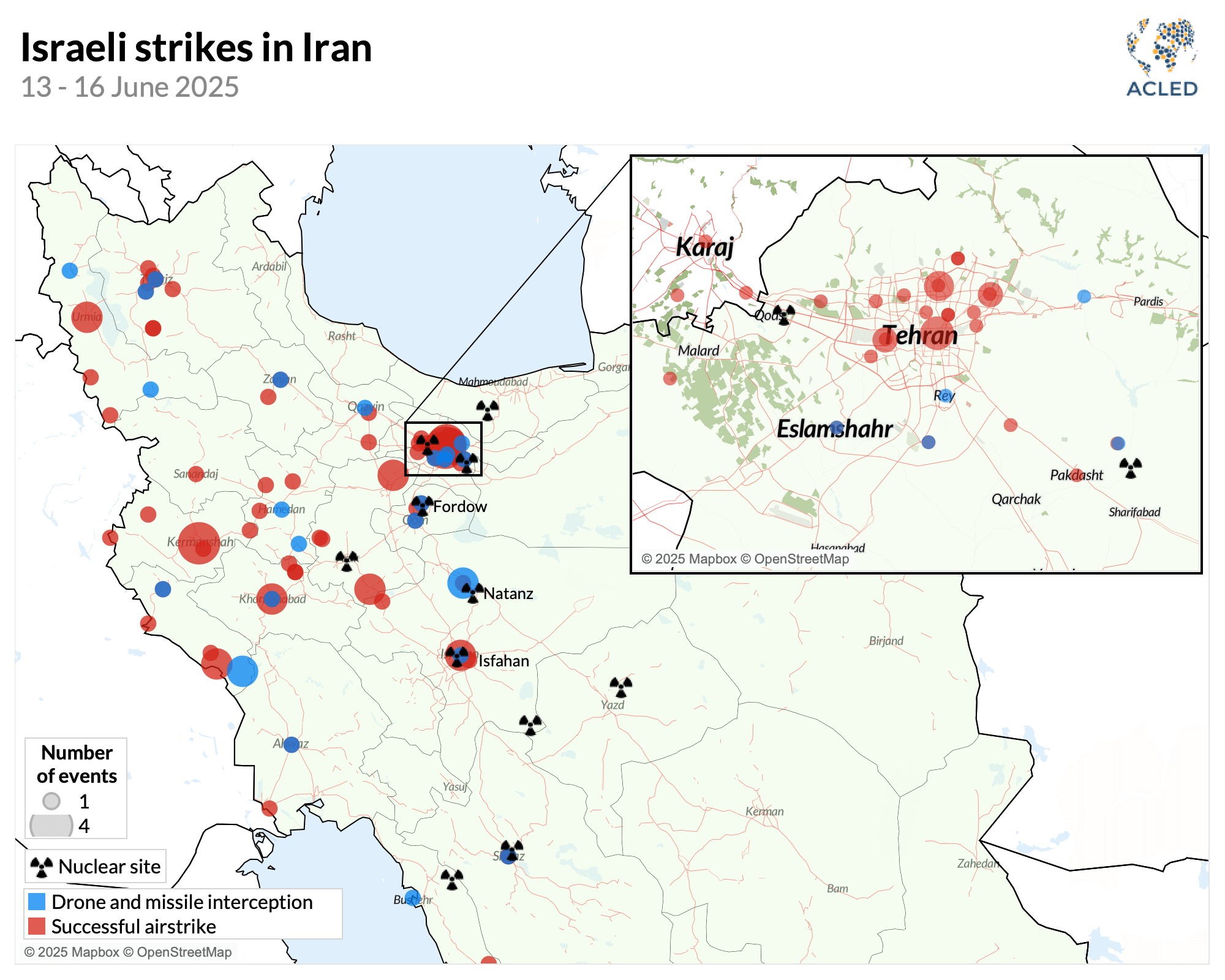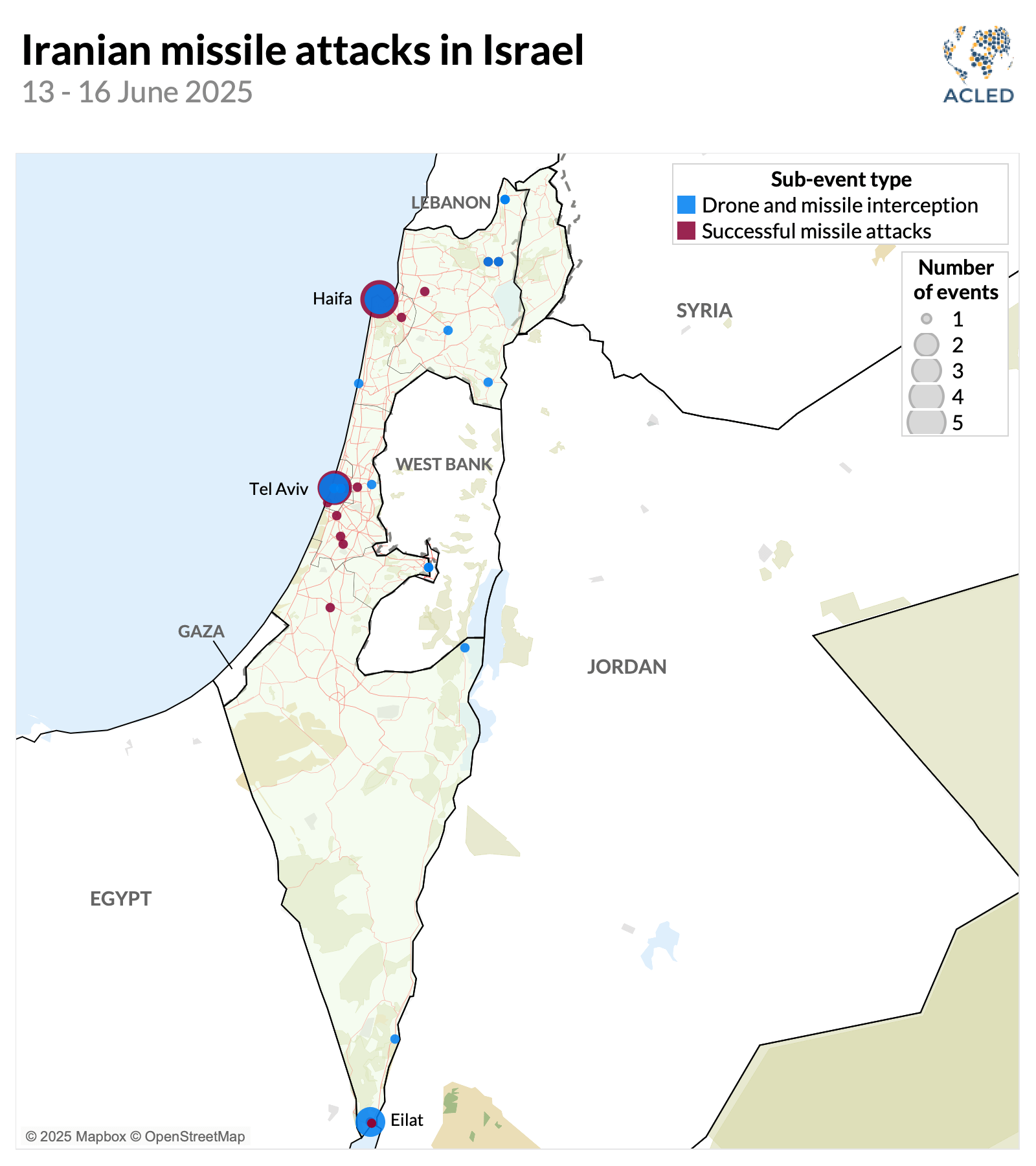The direct confrontation between Israel and Iran marks a historic rupture in regional warfare dynamics. Israeli strikes — under the codename Operation Rising Lion — were framed as a preemptive move to neutralize Iran’s nuclear program. Public statements from Israeli officials emphasized disrupting enrichment efforts at key sites like Natanz, Isfahan, and Fordow.1Joshua Yang and Karen DeYoung, “These Iran nuclear sites are the focus of Israel’s attacks,” The Washington Post, 18 June 2025 However, despite some confirmed damage, Fordow remains intact due to its fortified underground structure, prompting broad acknowledgment that Israel lacks the military capability to destroy such a facility without assistance from the United States. While Israel has yet to completely degrade Iran’s nuclear infrastructure, it has successfully decapitated key military and intelligence leadership. It has also extended the campaign to civilian and industrial targets, resulting in the deaths of hundreds of civilians, including aid workers. On 16 June, an Israeli airstrike hit a Red Crescent ambulance in Tehran, killing two aid workers — a stark example of the growing toll on humanitarian responders.

Iran’s response has seen some strikes successfully evade Israeli air defense and impact on Israeli territory, though most have been intercepted. ACLED records dozens of successful missile impact events,2ACLED counts the number of “air and drone strike events,” rather than individual strikes. Per ACLED methodology, when several strikes hit the same location on the same day, they are coded as one event in the dataset. See the ACLED Codebook for more details. including strikes on urban infrastructure in Haifa, Tel Aviv, and Eilat. Iran’s strategy appears phased and defensive-offensive: conserving some missile capacity for deterrence, avoiding direct US escalation, and ensuring strikes carry symbolic and infrastructural weight.3Hamidreza Azizi, “How Iran is Calculating Its War with Israel,” Middle East Council on Global Affairs, 18 June 2025 At the same time, early data suggests Iran’s launch rate has declined, likely due to Israeli targeting of missile launch infrastructure. Statements by Iranian officials suggest Tehran is balancing retaliation with diplomatic positioning, holding capacity in reserve to preserve leverage.4Jason Ma, “Is Iran running out of missiles? Its rate of attack on Israel is already slowing down, think tank says,” Fortune, 15 June 2025
Clionadh Raleigh, President & CEO of ACLED (Armed Conflict Location & Event Data), said:
“What comes next remains precarious. Israel continues to expand its target list beyond nuclear and military facilities to economic lifelines like South Pars gas fields. Iran, while signaling restraint, has not ruled out a broader escalation. US involvement remains the critical variable — Israel’s ability to achieve its maximalist war aims depends on Washington’s decision to provide advanced strike capabilities. For now, the region braces for further volatility, as diplomacy hangs by a thread and international actors scramble to prevent a broader conflagration.”
Note to editors:
For more information or to interview Clionadh Raleigh, please contact the ACLED press office at [email protected]. We are collecting real-time data and will have more information available in the coming days.
ACLED (Armed Conflict Location & Event Data) is a global monitor that collects, analyzes, and maps data on conflict and protest. ACLED provides detailed information to help identify, understand, and track patterns and trends in conflict and crisis situations around the world.





